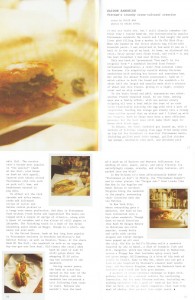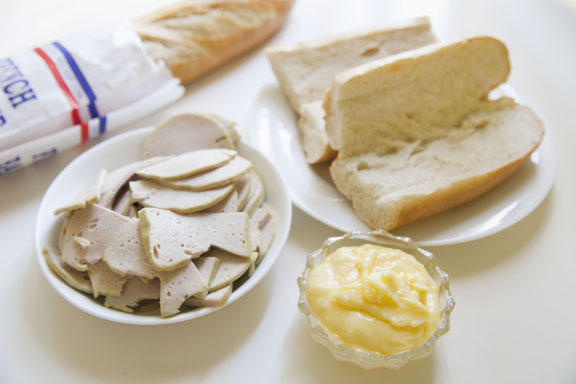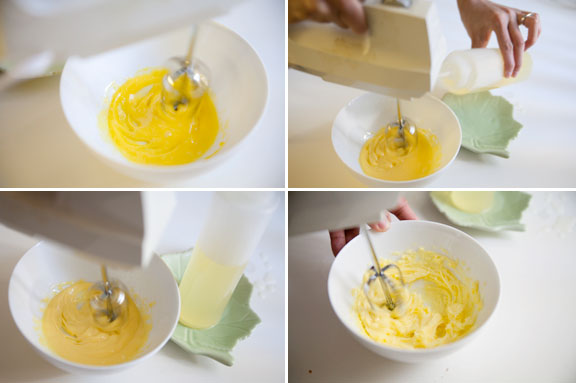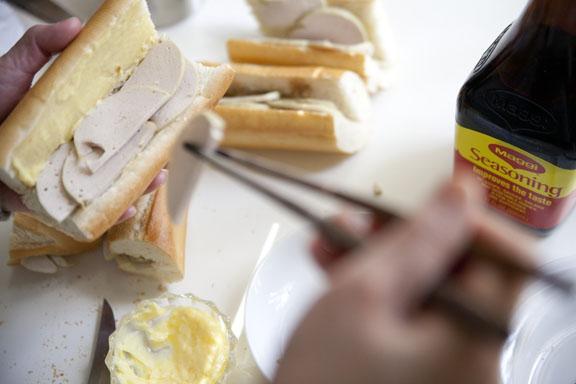 While preparing for our trip to Seoul in November, I came across an interesting Korean dish called budaejjigae (부대찌개), which translates to “army base stew.” Being a fan of Shin Ramyun, the Korean instant noodles with an almost cult following of Asians around the world, the idea of a spicy stew composed of Korean ramen and a mishmash of crazy toppings, including Spam, instantly appealed to me. I know — that either sounds very right or very wrong to you. Let me get to that in a moment.
While preparing for our trip to Seoul in November, I came across an interesting Korean dish called budaejjigae (부대찌개), which translates to “army base stew.” Being a fan of Shin Ramyun, the Korean instant noodles with an almost cult following of Asians around the world, the idea of a spicy stew composed of Korean ramen and a mishmash of crazy toppings, including Spam, instantly appealed to me. I know — that either sounds very right or very wrong to you. Let me get to that in a moment.
Regardless of whether this is a dish you think you might ever want to try, suffice it to say that budaejjigae has a fascinating history. And during my time in Seoul, I was fortunate to meet the lady whom many believe to be the creator of this stew. She’s still making it to this day! You can find out more about her and the origins of budaejjigae in my story in the Washington Post’s travel section today.Â
Now, as for whether this dish is worth trying… If you’re a fellow Shin Ramyun devotee, let me just say — one taste of budaejjigae, and you will understand the true meaning of Shin Ramyun. But if you’re balking at the whole idea of paying for a bowl of instant noodles at a restaurant, or asking why you would want to go to Korea to eat Spam — let’s just start over, shall we? This is not a bowl of glorified instant noodles. This is a Korean feast. So: think bubbling Korean stews cooked at the table with fresh ingredients — onions, scallions, gochujang (Korean red pepper paste), kimchi, tofu, leafy greens. Then, yes, add Spam and ramen and whatever else you like — it will all simmer in the rich, spicy broth, soaking in the flavors of the stew. To eat, serve with kimchi and rice. If you truly are not an adventurous eater, I suppose you could substitute in “real” meat (in Korea, Spam is made with real meat!) and maybe some Korean glass noodles. But if you don’t eat kimchi, I can’t help you there.
This is also an easy dish to recreate at home. It’s not quite the same as digging into a big black cauldron of budaejjigae in the dish’s native Uijeongbu, where each chef each has his/her own take on the stew. But it’s a nice, hearty meal that comes together quickly, especially for a cold winter weeknight.
Budaejjigae (Korean Army Base Stew): A Non-Recipe
This can be made quickly in a pot on the stove or cooked in a deep electric skillet or wok at the table, where it continues to simmer while you eat. You can have it as a one-pot meal on its own, or serve it with kimchi and rice.
Sticking to the rustic origins of this dish, here I offer you my non-recipe. Use this as a general guideline. Adjust amounts to your liking. The ingredients to this dish are very flexible, but generally it’s the gochujang, kimchi, Spam, and Korean ramen that make it, so try not to skip those. (Korean ramen has thicker noodles than other instant noodle brands. Don’t use the seasoning packets, though, as the flavor of the stew will come from the other ingredients.) Even if you just tossed everything into a pot and boiled it, it would turn out fine. The only thing I’ll mention is that if it comes out a tad too sour for you, due to the kimchi, try adding a dash of sugar. And you’ll want to eat the noodles as soon as they’re done, to avoid them getting soggy.
BASE: gochujang, kimchi
+
AROMATICS: onion, garlic, scallions
+
MEAT: Spam (additionally, sliced hot dogs and ground beef are also common)
+
BROTH: enough chicken or beef broth (homemade, canned, or even water would work) to just cover all the ingredients; add water if it boils down too quickly
+
VEGETABLES: leafy greens like garland chrysanthemum are popular (I’ve used pea sprouts in the photo), as are various mushrooms like enoki or shiitake
+
NOODLES: Korean ramen, such as Shin Ramyun noodles (skip the seasoning packets, though); some people like to also add sweet potato noodles
+
OPTIONAL TOPPINGS: baked beans, tteok (rice cake), bacon, tofu, and American cheese



















Connect with us